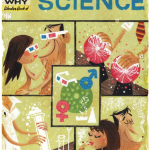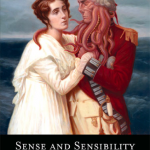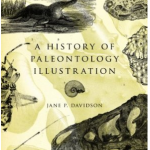Books & Essays
Reviewer Jerry Coyne appears to have some of the same reservations I do ("Mooney and Kirshenbaum also fail to support their contention that the knowledge gap between scientists and the public is increasing") - but he ends up voting thumbs down:
No matter how much atheists stifle themselves, no matter how many scientists reach out to the public via new media, we may not find the appetite for science infinitely elastic. This does not mean, of course, that we should refrain from feeding it. But figuring out where and how to intervene will take a lot more work than the shallow and unreflective…
The initial reviews of Chris Mooney and Sheril Kirshenbaum's new book Unscientific America: How Scientific Illiteracy Threatens our Future produced a small blogospheric kerfuffle last month. But I think Unscientific America has much more constructive and useful things to offer than provoking more arguments, and there are a lot of reviews focusing on the positives. This surprisingly short but wide-ranging book is a nutshell primer on science policy and communication issues, perfect for dissatisfied lab rats who want to engage in advocacy but don't have communications or policy training outside…
Check out this clever riff on vintage science books by Nate Wragg, one of a group of Pixar illustrators who teamed up to create the forthcoming Ancient Book of Sex and Science. Wragg says,
A favorite series of mine is "The How and Why Wonder Books." These were informational books that would focus on a certain subject or form of science per book. As I looked over the entire series, I thought to myself, "There is no sex and science issue." This gave me the perfect excuse to create my own volume for the series. The end result is the long lost "Sex and Science" edition that was never published.…
Janet has a very interesting post over at Adventures in Ethics, springboarding off Chris Mooney & Sheril Kirshenbaum's new book Unscientific America. She discusses a key concept that seems obvious, but constantly ends up being ignored by both pro-science and anti-science factions: scientists are not a monolithic interest group. (For one thing, we disagree about how and when to approach the public, and how conciliatory to be).
Janet says,
I think it's fair to say that scientists and other members of Team Science are not in total agreement about which segments of the public can be…
. . .Sense and Sensibility and Sea Monsters. According to editor Jason Rekulak,
I know there are a lot of vampire fans, but the genre feels exhausted to me. Whereas Sea Monsters allowed us to draw inspiration from so many rich and diverse sources--most obviously Jules Verne novels and Celtic mythology, but also Jaws, Lost, Pirates of the Caribbean, even SpongeBob Squarepants! I think Pride and Prejudice and Zombies fans are counting on us to deliver something original, and I don't think they will be disappointed."
Hey! He didn't mention Cthulhu. But check it out - there is a quantitative…
Wow: it looks like PZ Myers and his fans are embroiled in a bit of a kerfuffle with Chris Mooney and Sheril Kirshenbaum and their adherents over the new Mooney/Kirshenbaum book, Unscientific America.
First, PZ says the book is "useless." Chris says well, phooey, because plenty of other people like it. And then everybody calls one another "poopyheads" (or variants thereof) in the comments sections of both blogs, which are running into the hundreds.
I'm relieved to note that I am completing two big projects next week, so I won't have time to read my copy of Unscientific America for a couple…
Ornament(al) Skull
Noah Scalin
Anatomophiles alert: tomorrow, Noah Scalin, proprietor of the Skull-A-Day blog and author of Skulls, opens a new show at the Quirk Gallery in Richmond, VA.
I just typed "Richmoaned". Does that qualify as a Freudian slip? Or something else?
Last Friday, in my post on Nature's comprehensive coverage of science journalism, I mentioned the recent Nature Biotechnology conference paper on science communications co-authored by scibling Matt Nisbet. I also said I'd come back to one of the points in it that bothers me.
As I said yesterday, most of the material in this paper (the issues of media fragmentation, framing problems, incidental exposure, etc.) has been expressed elsewhere. I agree with the majority of it, and it's nice to see it all in one place. But I have to take exception to a small piece of the paper - an example that I've…
One of the challenges we faced with our new blogosphere initiative, Silence is the Enemy, was how to mobilize people to do something about the plight of rape victims. It's not that people don't have empathy for rape victims; it's that the experience of living in a war-torn nation where rape and murder are routine facts of life is so foreign and horrifying to us, we tend to tune it out. Part of the way to deal with this is to give people a clear mission - something simple they can do; in our case, donating to Doctors without Borders (as I am for the month of June), or writing to Congress, or…
I finally got around to reading my backed-up RSS feeds, and had the chance to peruse these, well, demented 1970s biology textbook illustrations uncovered by Crooked Timber. I mean, what? No - what??! Crooked Timber calls it a "Groovy Prog Rock Wannabe Biology Text." I don't know what to say, except that I went to Artomatic yesterday, which had something like a thousand artists, and this psychedelica is far trippier than anything I saw there. Whoa, man.
For the record, if I had, as a child, learned to associate biology with angry disembodied leopard heads flying towards me on Frisbees of fire…
I love this line of covers for a UK publisher's re-issue of sci-fi classics: their simplicity underscores the stark, anxious, fractured psychological underpinnings of futuristic fiction.
As author Stephen Baxter told New Scientist, "Science fiction has rarely been about the prediction of a definite future, more about the anxieties and dreams of the present." That's why covers that cater to indulgences (lush technicolored paintings of muscular space barbarians defending busty astronaut ladies from tentacled aliens, etc.) are fun, yet leave me feeling too often that the author's vision has…
Students and laypeople alike often view biotech patents with baffled disbelief. How is it possible to patent bacteria? Mice? Cell types and DNA sequences? How can someone else "own" gene sequences that all of us have carried inside our bodies since birth?
Honestly, as a biologist, the concept of patenting a gene doesn't really throw me for a loop. Think about it: although we all have genes, we can't read them unless we use a variety of lab techniques, many of them patented. In turn, reading the sequence isn't any use unless we know why we care - that this gene is relevant and can be used to…
OMG! This Chris Beckett story is totally about me!
You can read the title story of The Turing Test online, and it's well worth checking out. In a dystopian future, Jessica runs a gallery where art increasingly involves human body parts and is designed to shock and appall bystanders.
Now I have to go read it. . .
via iO9
Over at his Discover blog, Carl Zimmer has asked readers to help choose a cover for his new non-majors evolution textbook. If you have a good eye for design, as I'm sure many BioE readers do, go over and help him pick the most appealing cover!
It's a hard choice, as so many design choices are. I'll leave my vote until after the fold so I don't prejudice you.
Okay; so I like all of them, but don't *love* any of them. My problem with the orchid, which I think is the most elegant and subtle design, is that it doesn't say "evolution" to me. It says "botany." Then it says "yawn." The minute I…
I promised you some updates on the Google Books Settlement, so here you go. Things are definitely getting interesting.
First, I mentioned earlier that I was going to attend a panel on the Google Book Search Settlement here in DC, featuring representatives of Google, the publishers, and the Internet Archive. ITIF, which organized the panel, has made the entire thing available online; I've linked to it at the bottom of the post, because it's over an hour long.
Anyway, it was interesting to hear the (very civil) differences of opinion between Dan Clancy, the Engineering Director for Google Book…
Check out Brian's new review of A History of Paleontology Illustration (Life of the Past) by Jane Davidson, in Palaeontologia Electronica:
It is rare for fossils to be featured in fine art, but in the 15th century painting A Goldsmith in His Shop, Possibly Saint Eligius by the Flemish master Petrus Christus there is, if you look carefully, a fossil shark tooth among the objects scattered on the shop's table. The fossil plays a nearly insignificant role in the painting, but it reflects the general interpretation of such natural curiosities at the time. From this modest starting point,…
An interesting perspective from today's WaPo: David Kessler, doctor, lawyer, and former FDA commissioner, argues that the food industry manipulates the neurological impacts of fats and sugars to program consumers to eat more than we need or want.
"The food the industry is selling is much more powerful than we realized," he said. "I used to think I ate to feel full. Now I know, we have the science that shows, we're eating to stimulate ourselves. And so the question is what are we going to do about it?"
Read more about Kessler's Dumpster-diving quest to prove his point here. Kessler's new book…
Christmas greeting card, school unknown, circa 1920.
Dittrick Medical History Center
from Dissection: Photographs of a Rite of Passage in American Medicine 1880-1930
Slate has an intriguing new review by Barron Lerner of a book called Dissection: Photographs of a Rite of Passage in American Medicine 1880-1930, by John Harley Warner and James M. Edmonson. The book delves into the turn-of-the-century practice of photographing medical students with cadavers - photos that today read as weird, grotesque, even offensive.
The photos unearthed by Warner and Edmonson depict an astonishing variety of…
Zombie Stomper by Iron Fist, via Haute Macabre
Yup - Abraham Lincoln, Vampire Hunter is the project the author of Pride and Prejudice and Zombies is doing next. While my review of P&P&Z was pretty positive, I'm not sure I can in good conscience encourage this trend.
Also, note that while P&P&Z has surged to the top of the bestseller list, the New Yorker was not as charitable in its review as I was. Perhaps these shoes by Iron Fist might serve as a litmus test for whether you are likely to enjoy P&P&Z. Tongue-in-cheek fun or thoroughly foul? You be the judge!







